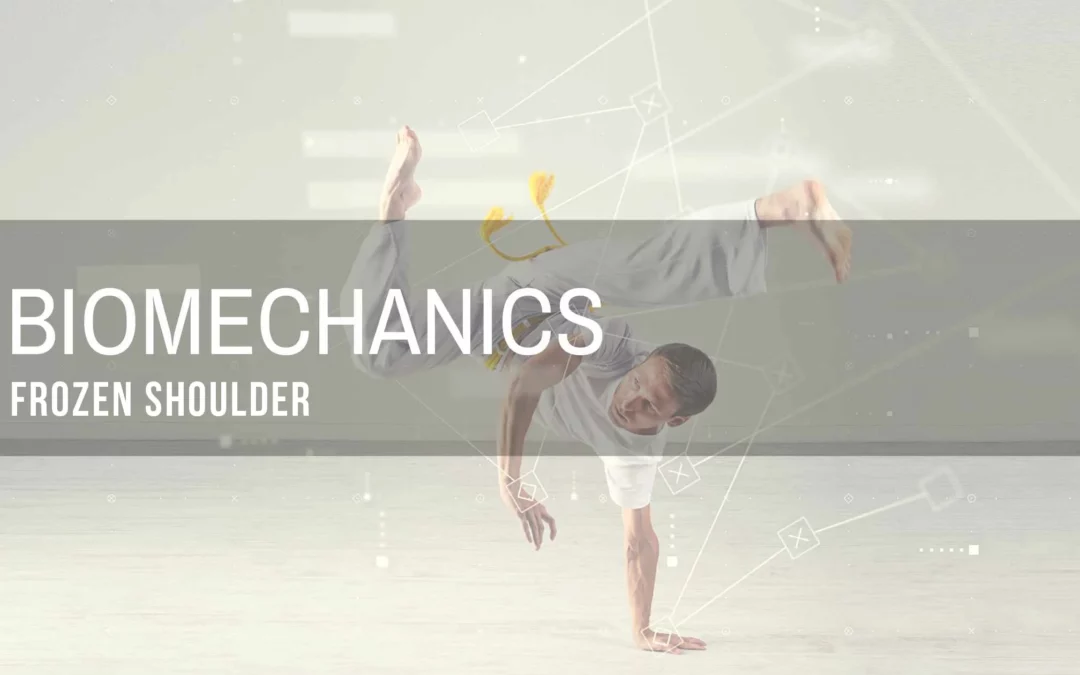Structures of the Shoulder – Glenohumeral Joint
The shoulder is considered the most mobile joint of the body. With that mobility comes an increased risk for injury and dysfunction. While the shoulder complex is technically made up of four joints, the one that provides the majority of the mobility we associate with arm movement is called the glenohumeral joint (GH joint). This is where the upper arm bone, the humerus, attaches at the shoulder blade through a small recess called the glenoid cavity. The head of the humerus resembles a ball that fits within this recess and is held there through ligaments, joint capsule, rotator cuff musculature, and the labrum. Together these structures tether the ball to the socket and afford the GH joint its dynamic range of motion.
The ligaments limit how far the arm can move within the socket, the labrum lines the surface of the socket and extends beyond its borders to increase its depth and provide additional stability, the capsule provides added support or restraint to keep the head of the humerus in contact with the socket and the rotator cuff not only helps to move the arm, but acts to compress the humeral head in the glenoid and reinforce the joint capsule on the front, top and bottom sides.
Frozen Shoulder – Adhesive Capsulitis
A common condition impacting the mobility and the structures of the GH joint is called Frozen shoulder, or otherwise known medically as Adhesive Capsulitis. This is a painful, inflammatory condition that causes an increase in the fibrous thickness and stiffness of the joint capsule. This causes a reduction in the GH joint space, limiting the pain-free range of motion, notably during arm rotation and arm flexion. It is characterized by three phases: Freezing (painful/acute phase), frozen (stiffening/sub-acute phase), and thawing (resolution phase).
What Causes Frozen Shoulder
Frozen shoulder is hypothesized to be an inflammatory issue. This means the immune system attacks the joint and surrounding structures leading to scarring and thickening of the capsule. It can be either primary, presenting without an attributable reason, or secondary to a variety of conditions including post-surgery, post-stroke, diabetes, or Parkinson’s Disease. Maladaptive posture or movement of either the shoulder blade, trunk or the humerus can also create the conditions which lead to Frozen Shoulder. Prior injury can also lead to Frozen Shoulder, including Tendinitis, Bursitis or Rotator Cuff Syndrome.
How Do You Know If You Have Frozen Shoulder?
Typically, individuals feel pain on the front of the shoulder and in later stages struggle to perform overhead arm movements and daily activities like hanging clothes, fastening seat belts or brushing one’s teeth.
Diagnosing Frozen Shoulder can be a challenge as the symptoms expressed can mimic or accompany those of other common conditions like rotator cuff impingement, tendonitis or arthritis. In fact, early stages of Frozen Shoulder are managed in the same way as shoulder impingement.
Traditionally, during examination health care professionals consider Frozen Shoulder as a potential diagnosis if the shoulder range of motion is significantly limited both passively and actively in all directions. The diagnosis can be confirmed through a special X-ray procedure called arthrography.
How to Keep Your Shoulders Healthy & “Unstuck”?
As mentioned, reinforcing the right patterns of movement for the shoulder blade on the rib cage, along with maintaining the mobility of the humerus within the socket, should protect the tissues of the shoulder and reduce chronic inflammation.
Oftentimes, due to the compensatory recruitment of the rotator cuff musculature or the stiffening of the capsule (anterior or posterior) the arm/ shoulder blade rhythm can become compromised, resulting in maladaptive movement. This leads to the accessory movement of the shoulder blade as the arm moves through its arc of motion. Essentially the shoulder is dragged along with the arm, moving as a unit rather than moving independently. This changes the position of the shoulder joint leading to a reduction of the joint space, creating the impingement cycle and pain.
Suggested Interventions
Assess for rotator cuff range of motion limitations for both internal and external rotation:
*Normal internal rotation r.o.m. – 70 degrees
*Normal external rotation r.o.m. – 90 degrees
Increase mobility of the affected rotators
*Mobilize external rotators – Teres Minor & Infraspanatis
*Mobilize internal rotators – Teres Major & Subscapularis
Increase the strength of the deficit rotator groups –
*Side-Lying External Rotation w/db (Elbow at 90 degrees) 2 x 20
*Standing Internal Arm Rotation w/band (Elbow at 90 degrees) 2 x 20
References
- Kamal Mezian1; Ke-Vin Chang – Frozen Shoulder. Treasure Island (FL): StatPearls Publishing; 2020 Jan [PubMed]
- Irem Duzgun, Elif Turgut, Leyla Eraslan, Bulent Elbasan, Deran Oskay, and Ozgur Ahmet Atay – Which method for frozen shoulder mobilization: manual posterior capsule stretching or scapular mobilization?. J Musculoskelet Neuronal Interact. 2019; 19(3): 311–316 [PubMed]




